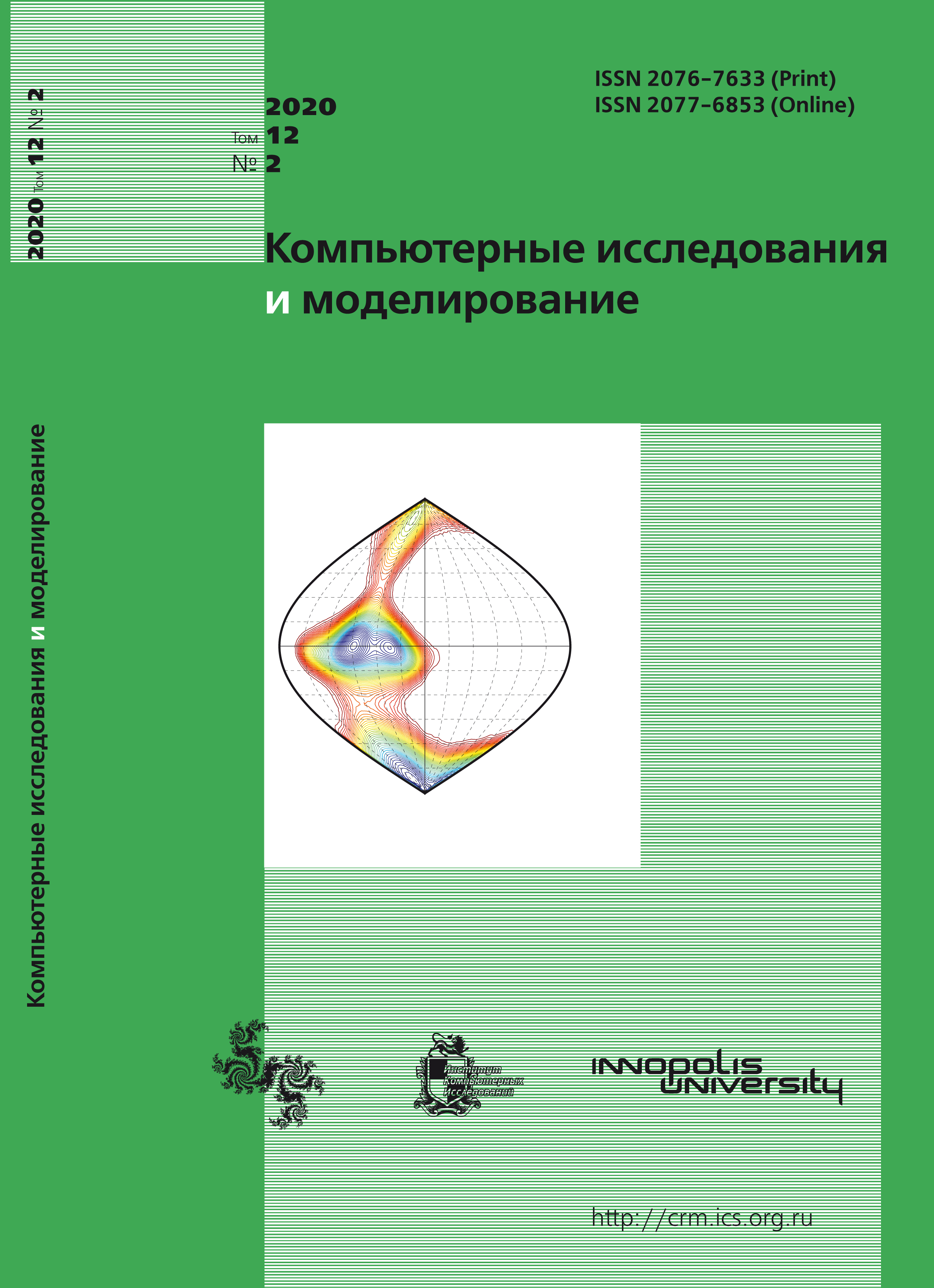All issues
- 2025 Vol. 17
- 2024 Vol. 16
- 2023 Vol. 15
- 2022 Vol. 14
- 2021 Vol. 13
- 2020 Vol. 12
- 2019 Vol. 11
- 2018 Vol. 10
- 2017 Vol. 9
- 2016 Vol. 8
- 2015 Vol. 7
- 2014 Vol. 6
- 2013 Vol. 5
- 2012 Vol. 4
- 2011 Vol. 3
- 2010 Vol. 2
- 2009 Vol. 1
Solution of the problem of optimal control of the process of methanogenesis based on the Pontryagin maximum principle
 pdf (415K)
pdf (415K)
The paper presents a mathematical model that describes the process of obtaining biogas from livestock waste. This model describes the processes occurring in a biogas plant for mesophilic and thermophilic media, as well as for continuous and periodic modes of substrate inflow. The values of the coefficients of this model found earlier for the periodic mode, obtained by solving the problem of model identification from experimental data using a genetic algorithm, are given.
For the model of methanogenesis, an optimal control problem is formulated in the form of a Lagrange problem, whose criterial functionality is the output of biogas over a certain period of time. The controlling parameter of the task is the rate of substrate entry into the biogas plant. An algorithm for solving this problem is proposed, based on the numerical implementation of the Pontryagin maximum principle. In this case, a hybrid genetic algorithm with an additional search in the vicinity of the best solution using the method of conjugate gradients was used as an optimization method. This numerical method for solving an optimal control problem is universal and applicable to a wide class of mathematical models.
In the course of the study, various modes of submission of the substrate to the digesters, temperature environments and types of raw materials were analyzed. It is shown that the rate of biogas production in the continuous feed mode is 1.4–1.9 times higher in the mesophilic medium (1.9–3.2 in the thermophilic medium) than in the periodic mode over the period of complete fermentation, which is associated with a higher feed rate of the substrate and a greater concentration of nutrients in the substrate. However, the yield of biogas during the period of complete fermentation with a periodic mode is twice as high as the output over the period of a complete change of the substrate in the methane tank at a continuous mode, which means incomplete processing of the substrate in the second case. The rate of biogas formation for a thermophilic medium in continuous mode and the optimal rate of supply of raw materials is three times higher than for a mesophilic medium. Comparison of biogas output for various types of raw materials shows that the highest biogas output is observed for waste poultry farms, the least — for cattle farms waste, which is associated with the nutrient content in a unit of substrate of each type.
Copyright © 2020 Korolev S.A., Maykov D.V.
Indexed in Scopus
Full-text version of the journal is also available on the web site of the scientific electronic library eLIBRARY.RU
The journal is included in the Russian Science Citation Index
The journal is included in the RSCI
International Interdisciplinary Conference "Mathematics. Computing. Education"






